
The Nvidia GeForce GTX 980 4GB Card
With our architectural and feature discussion behind us, we can now look at the physical incarnation of the GTX 980 itself. It's a dual slot model that uses a design first introduced with the GTX 690 and made all the more familiar with the GK110 GPU-based cards. In fact, the card is even the same length as the GTX 780 etc. at 267mm. It's encased in an aluminium frame and incorporates a black magnesium alloy housing for the fan. Also included is the trademark LED backlit green GeForce GTX logo along the top of the card. The build quality is again truly fantastic and while we still think it looks great, we do wonder whether now would have been a good time for Nvidia to spruce the design up a little.Examining the rear I/O we find that the reference set of display outputs has moved away from DVI and towards DisplayPort – something we're fully in support of. The single dual link DVI-I connection is joined by one HDMI 2.0 port and three DisplayPort 1.2 connections. As said, any four of these can be used at once.
Along the top edge we find a pair of SLI connectors for multi-GPU enthusiasts, as well as two supplementary 6-pin PCI-E power connectors. This itself is a sign of the card's low power credentials – high end launches are almost invariably fitted with a 6-pin/8-pin combination.
A new addition to the design is full cover backplate, providing users with aesthetic benefits as well as protection and additional heat dissipation for the PCB and the components within. It's also partially removable; you can remove a section of the backplate as shown to increase airflow between cards that are densely packed together e.g. for 3-way SLI users or 2-way SLI users that don't have a spare PCI slot between their cards. The small section may not look like much but Nvidia says it has been finely tuned to provide optimal airflow between cards, though without a second reference model we're unable to test the impact on temperatures and/or fan speed.
The GPU is cooled by three copper heat pipes filled with high purity water that dissipate their heat through the main heatsink fins, which are anodised in black. There's also a thick metal contact plate which, together with the numerous thermal pads, draws heat away from the all of the memory chips and power components (MOSFETs, capacitors and controllers) – it's a very high quality and complete cooling solution.
A single radial fan is responsible for generating airflow. It draws air in both through itself and over the small set of aluminium fins at the card's far side, as these are not sealed in. Air is then directed through the main fin stack before being expelled entirely through the rear I/O panel, which now has bigger gaps in so that more air can escape.
The PCB reveals a 4+1 phase power arrangement. Board partners are of course likely to develop their own power delivery systems for custom cards, but even this set-up is plenty for a 165W part. Nvidia claims that 1,400MHz is a very realistic target for these cards when overclocking, and we'll of course be putting that to the test.
The GTX 980 includes a feature first introduced with the GTX 780 Ti, whereby it receives power evenly from all three sources (2 x 6-pin connectors and the PCI-Express bus). Overclocking can cause imbalance and less stable clock speeds, but onboard power balancing circuitry means that the card can start to draw more power from the other inputs should one become maxed out or imbalanced.
The Samsung memory has the product code K4G41325FC-HC28. These are 1.5V 4Gb parts, so eight are needed in total to make up the 4GB, and all eight are found on the front of the PCB. They are rated for data rates up to 7,000Mbps, which is handy since that is the speed they are clocked too. Hopefully they respond well to overclocking.

MSI MPG Velox 100R Chassis Review
October 14 2021 | 15:04

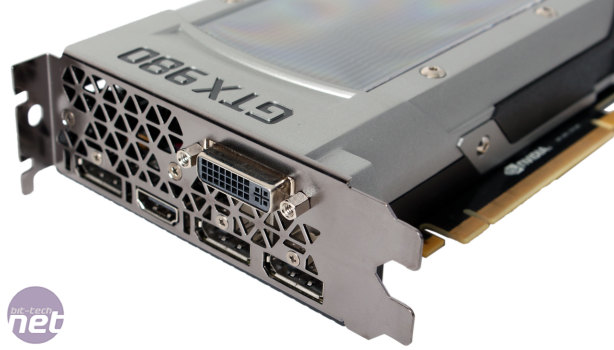
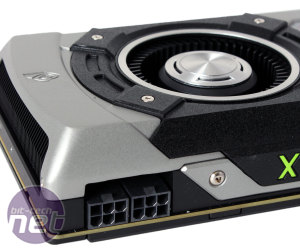
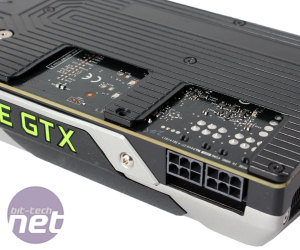
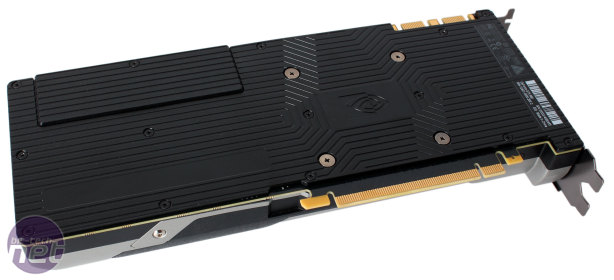
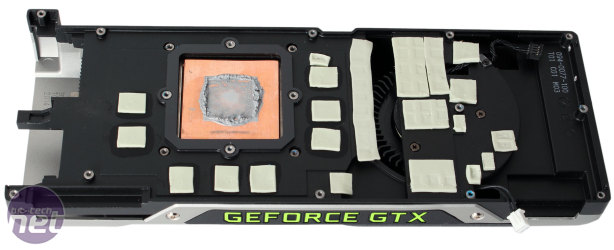
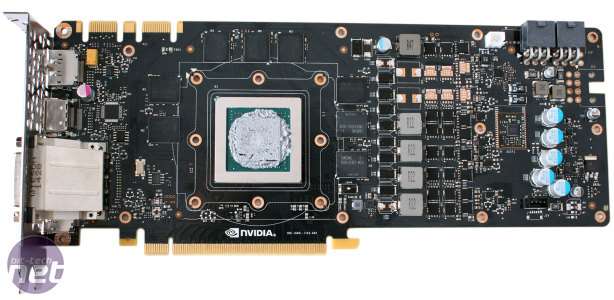
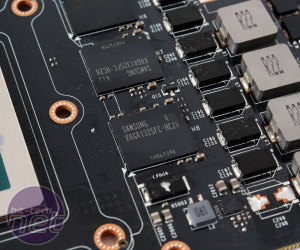
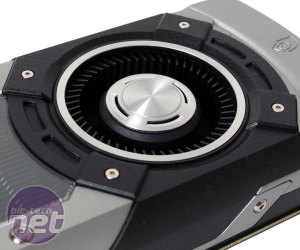







Want to comment? Please log in.